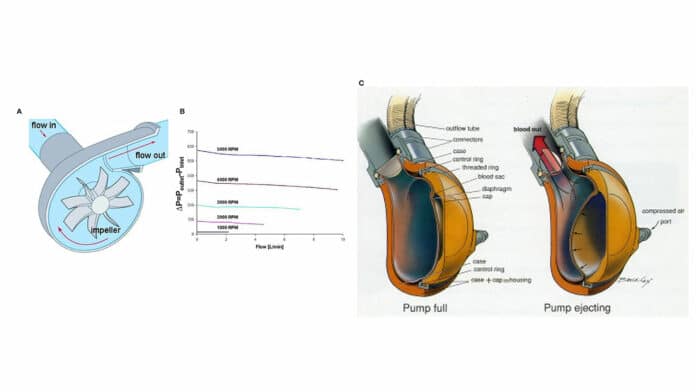The heart pumps, also known as a ventricular assist device, support heart function and blood flow in people who have weakened hearts. The device takes blood from a lower chamber of the heart and helps pump it to the body and vital organs, just as a healthy heart would.
In a small but significant number of patients, bleeding can occur during blood pump use, and in some instances, clots can form in the pumps or tubes leading into and from the heart.
A new invention that has received a $3 million grant from the National Institutes of Health may solve this problem. Penn State scientists have used computational techniques to create both a clot model to anticipate where clots may form amid blood pump use and strategies to design more secure blood pumps.
Gerson Rosenberg, professor of surgery and bioengineering, said, “Our research focuses on developing methods to design improved pumps that will have a reduced incidence of bleeding and strokes.”
Scientists hope their research will help develop blood pumps that can be used, for example, on a congestive heart failure patient at a much earlier stage in their disease. This would greatly benefit the patient because if there is a blood pump intervention at a much earlier stage of the disease process, recovery can occur much sooner. The heart assisted by a blood pump will not have to work as hard and therefore last longer.
At the same time, a safer heart pump is important for patients with serious heart disease because they are commonly used as a bridge-to-transplant for patients waiting for a heart. The less time on a heart pump, the better, given the stroke and blood clot risk.
Keefe Manning, professor of biomedical engineering and surgery, said, “The bottom line is the longer a patient can go with a safer blood pump, the higher likelihood they have of finding a donor’s heart and surviving.”
“This research is a continuation of a tradition of collaborative cardiac-related research efforts at Penn State that have a strong track record of success.”
